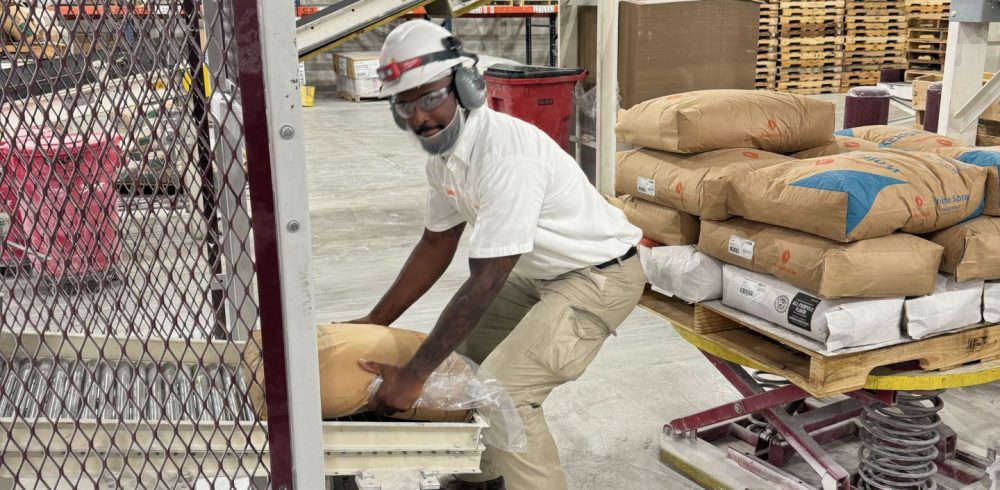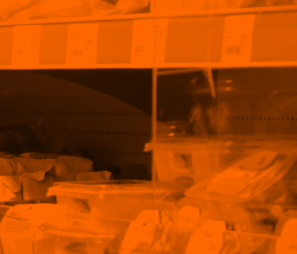One of the largest premium flour and ingredient companies in North America, Ardent Mills, recently implemented automatic testing on several of its conveyor Fortress Technology metal detectors. A number of the company’s packaging lines are now also using digital reporting to enhance efficiency, food safety and traceability.
Ardent Mills has an expansive national footprint. Comprising over 40 locations producing flour, quinoa and pulses, organic and gluten-free products, Ardent Mills recognises the importance of embracing the newest digital technologies to ensure that every aspect of its operations remain true to its quality standards. Processing around 22.4 million bags of packed milled product annually, over the last 12 months Packaging Engineer Manvine Bharj and her team, supported by local Fortress food safety specialists, has set up Halo Automatic Testing on six inline conveyor packaging lines.
At the mills that ship packed product direct to retailers and commercial bakeries, Ardent implements an end-of-line HACCP testing point, just before palletising. “We intentionally test our inspection equipment more often than our customers’ conformance requirements stipulate, as it provides extra quality assurance and fills us with confidence that our products are the safest they can be,” notes Manvine.
Activating the technologies pre-installed on their Halo Ready Fortress metal detectors has proven to be an efficiency and safety gamechanger for many of the mills’ quality managers. The resulting operational savings have been equally rapid. Manvine estimates the ROI on the original Stealth Metal Detector investment has been achieved in six months or less. “Halo provides the perfect blend of inspection continuity, contaminant detection, machine performance and safety,” adds the Packaging Engineer.
MAKING THE SWITCH FROM MANUAL TESTING
Like many mills and bulk processors, one of the greatest challenges when performing repeatable manual tests is the amount of time and labour it requires and simulating the same conditions for each test. UK Sales Director Phil Brown explains: “Manual testing in milling environments often requires placing a test sample in the exact middle of each grain bag, passing this through the metal detector, removing it from the line, opening the packaging and removing the test sample, and inspecting it again. Testing all three metals, every two hours is a lot of heavy lifting, sifting, repacking and potential waste. Not to mention, replicating this test manually is extremely challenging to do accurately.”
Halo Automatic Testing instead independently tests all three metals in the exact geometric centre of each Stealth metal detector aperture. The technology then mimics the disturbance caused by a test contaminant calibrated to the precise size, metal type and speed of each product bag as it passes through the metal detector aperture.
“With automated tools like Halo and Contact 4.0 we are proactively preventing issues for our team members, all while improving customer service and overall food safety,” reports Manvine.
GIVING SAFETY THE BLUE LIGHT
In order to distinguish between a real metal detection reject and when a Halo test is being performed, the milling business requested one customisation – a blue light system to alert operators when a test is running.
“This feature alone has made a huge impact on our labor demands and potential product waste. Without this blue light we would have to either sift and rework every 50lb test sack assuming it was contaminated, or simply reject and waste it. That could have added up to re-inspecting 12 sacks, 600lbs of flour, per line, every shift,” highlights Manvine
SMARTER REPORTING A HIT WITH QA
With many sites moving towards paper-lite processes, automating QA documentation has been a crucial step in maximising both equipment and operator efficiency, reports the milling business.
As a web-based networked system, Contact 4.0 allows operators to monitor multiple metal detectors. “Our quality managers loved Contact 4.0 as soon as it was implemented. As a networked system, it’s so easy to go into the centralised browser, select and email shift reports and view when tests were performed. Having this complete oversight allows them to immediately address issues and ensure the inspection process doesn’t cause a bottleneck,” exalts Manvine.
The cohesive Contact 4.0 reporting system allows authorised employees to troubleshoot performance issues remotely. Test failure, fault or non-conformity events can trigger an automatic email alert, detailing when an event occurred on a specific machine.
With more facilities eager to switch and activate similar efficiency-enhancing programs, the packaging engineer anticipates ongoing integration projects. Citing real-time information as being the enabler for smarter decision making, Manvine believes that rolling out new technology also ignites curiosity and drives operators to do even better.
Manufacturing & Engineering Magazine | The Home of Manufacturing Industry News















